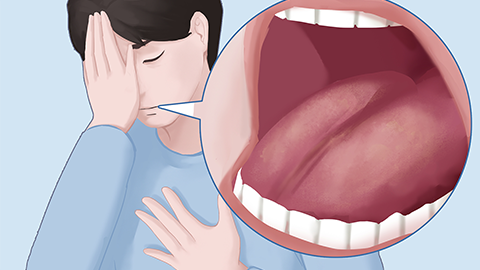What should I do if a three-year-old child's mouth gets injured from a fall?
Generally, the treatment methods for a three-year-old child's mouth injury mainly include local cleaning and disinfection, hemostasis, wound protection, medication, and adjustments in diet and care. The specific analysis is as follows:

1. Local Cleaning and Disinfection
After an oral injury, contaminants may remain in the wound and potentially cause infection, so cleaning is essential. Gently rinse the injured area with normal saline to remove food debris, dust, and other impurities. Then, carefully apply iodophor to the wound and surrounding skin to kill surface bacteria and reduce the risk of infection.
2. Hemostasis (Bleeding Control)
If there is bleeding from the wound, prompt hemostasis is necessary to prevent excessive blood loss. Keep the child in a sitting or slightly forward-leaning position to avoid blood flowing into the throat and causing discomfort. Use clean, sterile gauze or a cotton swab to gently press on the wound for 5–10 minutes until the bleeding stops. Apply moderate pressure to avoid increasing pain.
3. Wound Protection
An exposed wound is susceptible to friction and irritation from food; proper protection promotes healing. Under medical guidance, use a pediatric-specific oral wound protective film to cover the wound and minimize external irritation. Prevent the child from touching the wound with their hands or repeatedly licking it with their tongue, which could lead to secondary injury or infection.
4. Medication
If the wound shows redness, significant pain, or signs of infection, medications may be needed to relieve symptoms. Under a doctor’s guidance, medications such as recombinant human epidermal growth factor gel, watermelon frost spray, or cefaclor for oral suspension can be used to aid wound recovery.
5. Dietary and Care Adjustments
Inappropriate diet and care can impair wound healing and require targeted adjustments. Offer lukewarm, soft foods such as millet porridge, steamed egg custard, or well-cooked soft noodles. Avoid hot, hard, spicy, or irritating foods that may aggravate the wound. After meals, have the child gently rinse the mouth with warm salt water to maintain oral hygiene. Ensure the child gets sufficient rest to enhance the body’s recovery capacity.
In addition, parents should closely monitor the healing process. If persistent bleeding, worsening swelling, pus discharge, fever, or refusal to eat occur, seek medical attention promptly. During treatment, avoid vigorous running or jumping to prevent re-injury to the mouth and ensure smooth wound healing.




